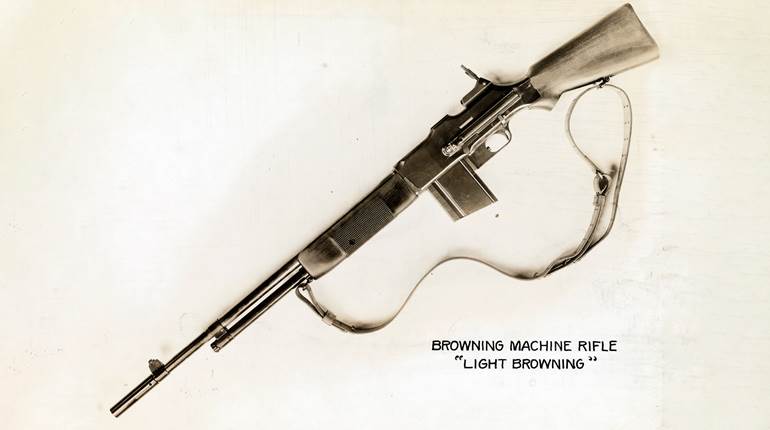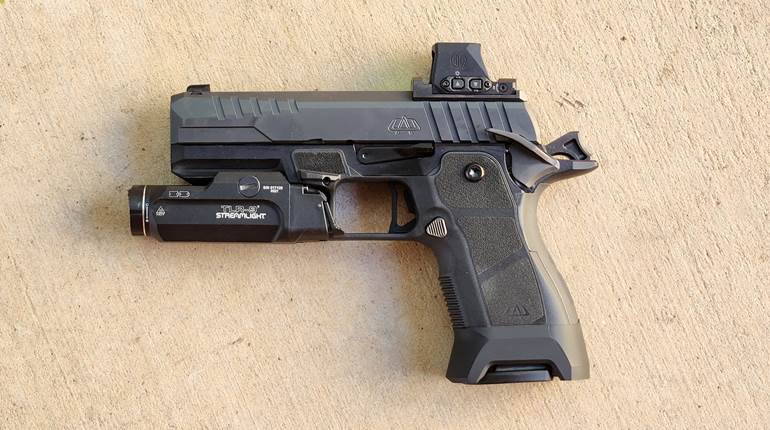
Imagine what the history of American firearms would have been without John Moses Browning. We certainly wouldn't have commemorated the 100th anniversary of the Model 1911 pistol, to this day widely considered to be the world’s most popular handgun. Today there are dozens of companies with a 1911-type handgun currently in production. Not bad for a 100-year-plus-old design.
Dozens of other famous firearms would never have existed were it not for Browning. He was the most prolific and innovative gun designer during the early years of what we know as the modern-day firearm. From 1879, when he received his first patent at age 24, until his death in 1926, Browning designed more than 30 rifles, handguns and shotguns for some of the world’s most prominent firearm manufacturers including Winchester, Colt, Browning, Remington, Fabrique Nationale and others. Several are still in production today and most out-of-production models are widely sought after by hunters, shooters and collectors. I have chosen seven to briefly highlight in this article.
Winchester Model 1894
John Browning’s relationship with Winchester Repeating Arms Company began in 1883 and lasted for 20 years. During this time he developed several rifles and shotguns for Winchester, but the best known were his lever-action rifles—the Models 1886, 1892, 1894 and 1895. By far, the most famous was the Model 1894, which still is considered by many as the classic deer rifle. It introduced the first smokeless-powder hunting cartridge, the .30-30, which helped it become the best-selling hunting rifle in the world. More than 7 million were made from 1894 to 2006, when the Winchester plant in New Haven, Conn., closed its doors after 150 years.  After a five-year hiatus, the Model 94 has been resurrected and is again in production, this time from Miroku in Japan, maker of many fine Winchester and Browning shotguns and rifles for over 50 years.
After a five-year hiatus, the Model 94 has been resurrected and is again in production, this time from Miroku in Japan, maker of many fine Winchester and Browning shotguns and rifles for over 50 years.
Colt Pocket Pistols
In addition to the Model 1911, Browning created several other pistols for Colt. Among my favorites were three of his smaller models—the Model 1903 Hammerless .32 Pocket, it’s twin, the 1908 .380 Pocket and the 1908 Hammerless .25 Pocket. Like the .45 ACP, these cartridges were designed by Mr. Browning.
With their narrow widths, smooth edges, concealed hammers and somewhat Art Deco appearance, these pistols were ahead of their time. Even non-shooters got to know these guns as they were seen in virtually every private eye or film noir movie up until the 1950s. The Colt Pocket series, especially the little .25s, became very popular as self-defense carry guns. Today, there are compact and sub-compact 9 mms and even .45s, but John Browning set the standard more than 100 years ago. Browning also designed several similar pocket autos for Fabrique Nationale in Belgium, which were sold in Europe under the FN brand and later marketed in this country by the company that adopted his surname. The FN Model 1910 (or Browning Model 1955) was considered to be an improvement to the 1903/1908 Colts with the recoil spring positioned around the barrel, allowing a more streamlined profile. This innovation was later seen on many other pistols, including the Walther PPK.
Hi-Power Pistol
The most popular and influential of Browning’s handguns is the Hi-Power, one that is still in production. Known variously as the Model 1935, P-35 or Grand Puissance (High Power), this pistol was based on a John Browning design that was finalized by FN’s Dieudonne Saive after Browning’s death in 1926. The Hi-Power name was in reference to the 13-round magazine capacity, making it the world’s first “high-capacity” handgun. Chambered for the 9x19 mm Parabellum cartridge that was developed for the German Luger, the Hi-Power has been used by the military of more than 50 countries.
The Hi-Power is similar in design to the Model 1911 in that it is a single-action pistol with an external hammer, thumb safety and slide-lock controls. It differs in that there is no grip safety and the short-recoil system doesn’t move the barrel vertically with a toggling link. Some observers consider the Hi-Power to be an improvement over the 1911, but saying so can start a heated conversation with many pistoleros.
Auto-5 Shotgun
There are two other very significant Browning designs, both of them shotguns and both marketed under the Browning trademark. The world’s first successful semi-automatic shotgun was the Auto-5, which dates all the way back to 1900. Known affectionately as the “Humpback” because of its squared receiver, the Auto-5 (or A-5) was first offered by John Browning to Winchester but they could not come to terms. He then went to Remington and, so the story goes, the president of Remington had a heart attack and died while John Browning was waiting to see him. Browning went to Belgium and sold the rights to the shotgun to FN, which produced it as the Browning Auto-5. He also licensed the design to Remington and Savage, who manufactured the gun as the Model 11 and Model 720, respectively.
The Auto-5 and its variants operate on a long-recoil system in which the barrel moves backward as the gun is fired and then moves forward as another round is loaded from the tubular magazine. A series of friction rings are adjusted to control the recoil operation, depending on the type of loads being used. If these rings are not properly set, the shotgun may not function and recoil can be excessive. The basic Auto-5 design was modified and improved over the years, and was used by Remington for many years in its popular Model 11-48. A similar system was also seen in several Franchi models. By the time the Auto-5 went out of production in 1998, it was second only to the Remington Model 1100 in shotgun sales history.
This is a more than 110-year old design and not state-of-the-art by any means, but there is an almost cult following of the old Humpback who won’t hunt with anything else (especially 16-gauge fanatics who have a Sweet Sixteen model). The square receiver is awkward to some but beautiful to others. Sometimes called the 1911 of shotguns, it is a classic that many shooters just have to own.
Superposed Shotgun
The Browning Superposed had a greater influence on the popularity of the over-under shotgun than any other model. Patented by John Browning in 1923, it was the last of his designs, and he died before it was introduced in 1928. Until the Superposed, most over-unders were high-priced, made-to-order guns from Europe and Great Britain. Browning’s goal was to offer a production-made over-under that was affordable. It went on sale for $107, but in the depths of the Great Depression in 1935 the price was reduced to about $70.
The Superposed remained quite affordable until the 1970s. In 1965, the standard model was $375, and this was when you could buy a Winchester Model 21 for $1,000. But, by 1975 the Superposed was listed at $1,180, and in 1977 it was discontinued from regular production. By the next year, an FN custom-shop Superposed was in the $3,000 range.
While the Superposed eventually was priced out of the “affordable market,” dozens of over-under models came onto the scene in the 70s and 80s, mostly made in Japan or Europe. The over-under had been established as the favorite design of many shotgunners and it was John Browning’s last legacy, the Superposed, that started it all.
Space runs out quickly when profiling the guns of John Browning, and this doesn’t even touch on his military rifles and machine guns that helped win several wars, some of which are still in service around the world. Then there are his slide-action Winchester .22s, the great Colt Woodsman pistol,  the Remington Model 8 semi-automatic rifle and so many more. Perhaps another article for another time.
the Remington Model 8 semi-automatic rifle and so many more. Perhaps another article for another time.





































